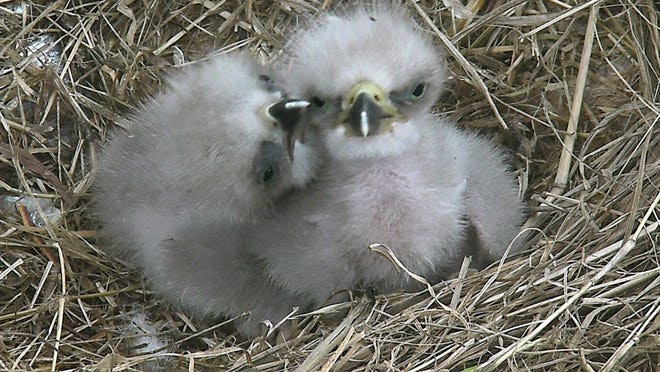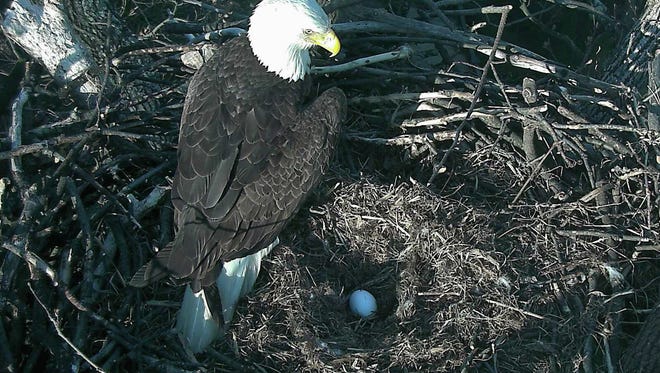'Eagle Watch' begins: D.C. eagle lays second egg


WASHINGTON — The First Lady and Mr. President are expecting another baby — at least the eagle versions of them in the nation's capital.
The mother eagle laid her second egg Thursday afternoon in their massive nest in the U.S. National Arboretum in Washington.
Now, the parents are focusing on incubating and fiercely protecting their precious eaglets-to-be. It will take about 35 days for the eggs to hatch, which means Americans will be in “Eagle Watch” mode during the last week of March.
Last year, eagle fans all over the world were glued to their computer and phone screens watching every move the eggs — and then eaglets — made.
► Related:Webcam of D.C. bald eagles goes live with sound
You can watch their progress 24/7 on the DC Eagle Cam again this year.
Mr. President and the First Lady are no strangers to raising little ones. In 2016, the pair raised two eaglets, Freedom and Liberty, from their perch atop a tulip poplar Tree at the National Arboretum. They raised one eaglet in 2015. The bald eagles are the first to nest in the nation's capital since 1947.
During the summer, when Mr. President and the First Lady were away, the American Eagle Foundation, based in Pigeon Forge, Tenn., made some renovations to the high-definition, two-camera setup that streams the birds' nest 24 hours a day, seven days a week. With the help of experienced arborist tree climbers, the foundation installed sensitive audio equipment that can pick up distant sirens, tiny songbirds and a slight breeze rustling through branches.
► Related: Watch: 'Eagle cam' streaming Fla. bald eagle births
Now the question is, can we expect third egg?
“The fact that we only have two years of previous nesting data on these birds still begs to question whether it’s possible that The First Lady could lay a third egg, especially since their nest is slightly larger this year,” said Julia Cecere, a representative with the American Eagle Foundation.
“All we can do now is watch and wait. We were excited about one egg and are ecstatic about the second, but watching three eaglets raised in one nest would be such a thrill for viewers everywhere,” she said.
Contributing: Lynda J. Edwards, Knoxville (Tenn.) News Sentinel. Follow WUSA-TV on Twitter: @wusa9